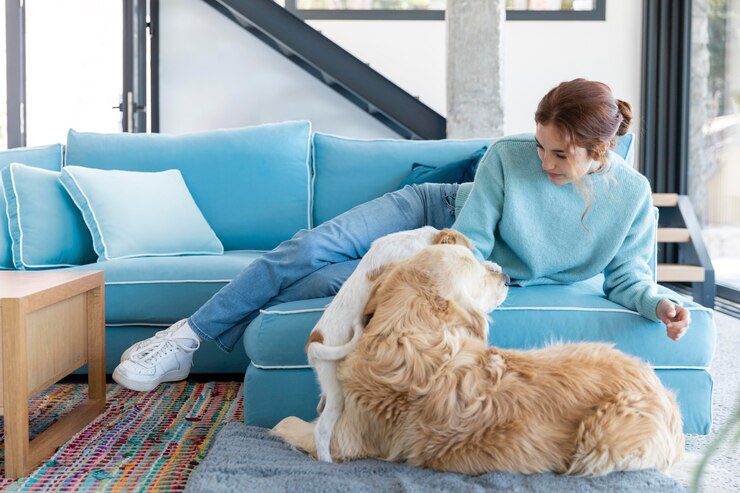Huskies are beloved for their striking appearance, captivating blue or multicolored eyes, and thick double coats. However, along with their beauty comes a formidable shedding cycle that can leave their owners grappling with a constant influx of fur in their homes. Understanding the shedding cycle of Huskies is crucial for effectively managing their hair within the household.
Importance of Managing Husky Hair in the House:

Effectively managing husky hair in the house is essential for several reasons. Firstly, excessive hair accumulation can lead to hygiene issues, exacerbate allergies, and create an unpleasant environment for both humans and pets. Additionally, husky fur has a remarkable ability to cling to furniture, carpets, and clothing, making regular cleaning a necessity to maintain a tidy living space. Moreover, managing husky hair promotes the overall well-being of the dog by preventing matting, skin irritations, and discomfort caused by tangled fur. Thus, implementing strategies to minimize husky hair in the house is crucial for ensuring a clean, comfortable, and harmonious living environment for both owners and their furry companions.
Creating a Husky-Friendly Environment:
Proper grooming techniques:
Brushing Strategies:
Regular brushing is essential for managing husky hair and reducing shedding in the household. Using a high-quality slicker brush or undercoat rake, owners should brush their Huskies at least a few times a week, especially during shedding seasons. Brushing helps remove loose fur, detangle mats, and distribute natural oils throughout the coat, promoting overall coat health and reducing shedding. Focus on the undercoat, where most shedding occurs, and pay attention to areas prone to matting, such as behind the ears and under the legs.
Bathing Frequency:
While Huskies are generally clean dogs with minimal odor, occasional baths are necessary to maintain their coat’s health and cleanliness. However, over-bathing can strip the coat of its natural oils, leading to dryness and increased shedding. Aim to bathe your husky every 6–8 weeks using a gentle, hypoallergenic shampoo specifically formulated for dogs. Be sure to thoroughly rinse out all shampoo residue to prevent skin irritation.
Nutrition for Healthy Coats:
Essential Nutrients:
Proper nutrition is fundamental for maintaining a healthy coat in Huskies. Ensure your husky’s diet is rich in essential nutrients such as protein, omega-3 fatty acids, and vitamins A and E. Protein is crucial for building strong, healthy hair follicles, while omega-3 fatty acids promote skin and coat health, reducing inflammation and shedding. Vitamins A and E support skin cell regeneration and maintain coat shine.
Foods to Promote Healthy Skin and Fur:
Incorporate high-quality dog foods containing sources of lean protein like chicken, fish, or lamb, as well as omega-3-rich ingredients such as salmon oil or flaxseed. Additionally, consider supplementing your Husky’s diet with fruits and vegetables like sweet potatoes, carrots, and blueberries, which provide vitamins and antioxidants beneficial for skin and coat health. Always consult your veterinarian to ensure your husky’s diet meets their specific nutritional needs and supports a healthy coat.
Husky-Proofing Your Home:
Choosing the Right Flooring Materials:
When living with a Husky, selecting the appropriate flooring materials can make a significant difference in managing their shedding. Opt for hard-surface flooring such as tile, laminate, or hardwood, as these materials are easier to clean and less likely to trap fur compared to carpets or rugs. Additionally, consider finishes that are scratch-resistant to withstand the occasional playful antics of your furry companion. Regular sweeping, vacuuming, and mopping will help keep fur accumulation to a minimum on these surfaces.
Selecting furniture and fabrics:
Huskies have a natural inclination to nest and may find comfort lounging on furniture. To minimize the impact of their shedding on your upholstery, choose furniture with smooth, easy-to-clean fabrics such as leather or microfiber. These materials are less likely to trap fur and can be wiped down or vacuumed regularly to remove any accumulated hair. Alternatively, consider using washable, removable covers on sofas and chairs for added convenience and ease of maintenance.
Implementing regular cleaning routines:
Maintaining a clean and tidy home is essential when sharing your space with a husky. Implementing regular cleaning routines will help keep fur under control and create a more hygienic living environment for both you and your pet. Develop a schedule for vacuuming carpets, rugs, and furniture upholstery at least a few times a week using a high-powered vacuum cleaner equipped with a pet hair attachment. Additionally, mop hard surfaces regularly to remove any lingering fur and debris. Washing your husky’s bedding and toys frequently will also help reduce the spread of hair throughout the house. By establishing consistent cleaning habits, you can effectively manage husky hair and enjoy a cleaner, more comfortable home environment.
Tools and Products for Managing Husky Hair:
Effective vacuum cleaners:
Investing in a high-quality vacuum cleaner designed specifically for pet hair removal is essential for managing husky hair in your home. Look for models equipped with powerful suction, specialized attachments, and HEPA filters to effectively capture and trap pet dander and fur. Consider features such as turbo brushes or motorized pet tools designed to dislodge and remove embedded hair from carpets, rugs, and upholstery. Regular vacuuming using an effective vacuum cleaner will help keep your home free from husky hair buildup and maintain a clean environment for both you and your pet.
Lint Rollers and Pet Hair Removers:
Lint rollers and pet hair removers are handy tools for quickly removing stray Husky hair from clothing, furniture, and other fabric surfaces. Keep a few lint rollers strategically placed throughout your home for convenient touch-ups whenever needed. Alternatively, opt for reusable pet hair removers equipped with sticky surfaces or rubber bristles that efficiently lift and trap hair with a simple swipe. These portable and affordable tools are perfect for maintaining a neat appearance and minimizing husky hair transfer to your belongings.
Specialized Brushes and Combs:
Using specialized brushes and combs designed for husky grooming is essential for effectively managing shedding and maintaining your pet’s coat health. Look for undercoat rakes or de-shedding tools specifically designed to remove loose undercoat fur and reduce shedding. These tools feature dense, fine-toothed blades that penetrate deep into the coat to remove trapped hair without causing discomfort to your husky. Additionally, consider using slicker brushes or grooming mitts for regular brushing sessions to help distribute natural oils and detangle mats. By incorporating specialized brushes and combs into your grooming routine, you can effectively control husky shedding and promote a healthy, shiny coat for your furry companion.
DIY Cleaning Solutions for Husky Hair:
Homemade carpet fresheners:
Create your homemade carpet freshener to effectively remove husky hair and odors from your carpets and rugs. Mix baking soda with a few drops of essential oils, such as lavender or lemon, in a jar with a perforated lid. Shake the jar to distribute the oils evenly throughout the baking soda. Sprinkle the mixture liberally over your carpets and rugs, allowing it to sit for at least 15-20 minutes to absorb odors and loosen trapped hair. Then, vacuum thoroughly to remove the baking soda along with the embedded hair, leaving your carpets refreshed and free from husky hair.
Natural Fabric Softeners:
Use natural ingredients to create a DIY fabric softener that helps reduce static cling and loosen Husky hair from clothing and upholstery. Combine equal parts white vinegar and water in a spray bottle and add a few drops of your favorite essential oil for a pleasant scent. Shake well to mix the ingredients. Spray the solution onto fabric surfaces before tossing them in the washer or dryer. The vinegar helps soften fabrics and loosen hair, making it easier to remove during the laundry cycle. This natural fabric softener is gentle on fabrics and safe for use around pets.
DIY Air Purifiers:
Improve indoor air quality and reduce airborne allergens like husky hair with a DIY air purifier using common household items. Fill a shallow bowl with activated charcoal or baking soda to absorb odors and pollutants. Place the bowl in areas frequented by your husky, such as living rooms or bedrooms. Additionally, consider placing bowls of distilled water infused with a few drops of essential oils like eucalyptus or tea tree oil to naturally freshen the air. These DIY air purifiers help neutralize odors and capture airborne particles, including pet dander and hair, creating a cleaner and more pleasant environment for you and your pet.
Preventive Measures to Reduce Husky Shedding:
Environmental Controls:
Implementing environmental controls can help reduce husky shedding by creating a more controlled indoor environment. Maintain consistent indoor temperatures to minimize fluctuations that may trigger shedding. Use a humidifier in dry climates to prevent dry skin and excessive shedding. Additionally, invest in air purifiers with HEPA filters to capture airborne pet dander and fur, reducing allergens and shedding in the home. Regularly groom and bathe your husky to remove loose fur before it has a chance to accumulate on surfaces.
Seasonal coat maintenance tips:
Adjust your grooming routine seasonally to address changes in your husky’s coat and shedding patterns. During shedding seasons in spring and fall, increase grooming frequency to remove loose undercoat fur and prevent matting. Use de-shedding tools and undercoat rakes to remove excess fur and reduce shedding effectively. Consider scheduling professional grooming appointments to manage heavy shedding periods more efficiently. In colder months, provide supplemental nutrition and ensure your Husky stays hydrated to support healthy skin and coat. Regularly check for signs of skin irritation or allergies, and consult your veterinarian if shedding becomes excessive or abnormal. By implementing seasonal coat maintenance tips, you can effectively manage husky shedding and promote a healthier coat for your furry companion.
Coping Strategies for Heavy Shedding Seasons:
Increased Grooming Frequency:
During heavy shedding seasons, such as spring and fall, increase the frequency of grooming sessions to effectively manage husky shedding. Incorporate daily brushing sessions using de-shedding tools and undercoat rakes to remove loose fur and prevent matting. Focus on areas prone to shedding, such as the undercoat and hindquarters, to minimize hair accumulation in the home. Regular grooming helps distribute natural oils, promotes healthy skin and coat, and reduces shedding overall.
Professional Grooming Services:
Consider utilizing professional grooming services during heavy shedding seasons to supplement your at-home grooming routine. Professional groomers have specialized tools and techniques to remove excess fur and reduce shedding more efficiently. Schedule regular grooming appointments to coincide with peak shedding periods, ensuring your Husky receives thorough coat maintenance and shedding management. Professional groomers can also provide valuable advice on grooming techniques and products to help manage shedding between appointments.
Managing Stress for Your Husky:
Heavy shedding seasons can be stressful for Huskies, increasing anxiety and discomfort. Implement strategies to help manage stress and promote a sense of calm for your furry companion. Provide a safe and comfortable environment with access to quiet spaces where your husky can retreat and relax. Engage in regular exercise and mental stimulation activities to help alleviate stress and prevent boredom. Consider using calming aids such as pheromone diffusers or supplements to support your husky’s emotional well-being during periods of heightened shedding. By managing stress effectively, you can help your husky cope with heavy shedding seasons more comfortably.
